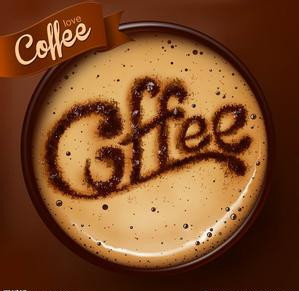Reveal the other side of Starbucks: only push brands but not sell coffee

Starbucks targets consumers in white-collar groups.
Note that in the positioning of Starbucks in China, white-collar workers are a state, not an identity. A considerable number of urban white-collar workers are literary youth and heavy consumers of coffee shops, but Starbucks will never place its position on the status of "literary youth", even though they have a good chance of being the same person. Why do you say so? please read the following patiently.
When it comes to cafes, what comes to mind in China is a sunny afternoon, leaning against a comfortable chair and a cup of coffee at hand, and you spend time in a room filled with the smell of fresh coffee beans.
As a result, general cafes tend to choose quiet places, even in hot spots. However, Starbucks prefers business circles, office buildings and shopping malls, usually in conspicuous and lively places, and even not shy away from facing the street. Popular landmarks are typical of white-collar workers, and their conspicuous location allows them to reach the store immediately without taking too much time.
Starbucks' bright white facade is also one of the reasons why it is easier to find. The brand uses white and green collocation tone, which is simple and natural, and the idea of abandoning complicated decoration is actually catering to the taste of urban white-collar workers, appearing in clean and efficient office buildings without violating. This makes Starbucks feel less like a "cafe" and more like a convenient, fast coffee takeout, which is an important difference between Starbucks and other coffee shops.
Why should it be positioned in this way?
There are two types of demand for cafes. One is the place of leisure and relaxation in the life scene, and the other is the needs of the work scene. White-collar workers need a coffee shop at work, which can be reached at any time to provide high-quality coffee and can take a rest during the busy work break.
The Starbucks we see in China obviously meet the needs of the work scene, but this is not the earliest positioning of Starbucks.
In the late 1980s, Howard Schultz summoned a group of investors to buy Starbucks and proposed to position Starbucks as the "third space", in addition to the office and home, in the words of American sociologist Ray Oldberg. you can also go to Starbucks to kill time. This Italian concept quickly conquered most American consumers, who gradually got used to drinking coffee at Starbucks rather than making it at home. This has enabled Starbucks to expand rapidly, not only in the United States, but also globally. In 1992, Starbucks went public successfully.
But the problem is that if Starbucks adheres to the position of killing time in the third space, it will never grow into the giant it is today.
Starbucks certainly recognises this. In 1994, Howard Schultz hired famous designer Wright Macy to help Starbucks' new chain expansion plan, including store design, table and chair height, and counter unification. the most important thing is that this time the plan is to replace most of the ceramic coffee cups in Starbucks stores with more labor-saving paper cups, which is actually more like a Starbucks signal: we need to be faster and more convenient.
If Howard Schultz said that the "third space" gives people a sense of relief of 100 points, then actually visiting Starbucks will only make you feel about 60 points, but comfortable and slightly relaxed.
As a result, Starbucks, like the ubiquitous McDonald's and Burger King, is no longer a "cool" place in the minds of its core consumers. Starbucks is no longer the "third space" full of dreams in the hearts of that American. How can a shop that allows customers to "have a cup of coffee for an afternoon" pay the rent and blossom all over the world?
It is fast food that makes Starbucks what it is today. But when Schultz returned to Starbucks, he made a high-profile introspection, saying that "rapid expansion makes Starbucks more commercial" and "the same way that customers' enthusiasm for coffee is disappearing". "find the lost traditional culture." However, we can see that Starbucks in China is still moving forward in the old way.
Why did Schultz shout these slogans that are not in line with the actual situation?
Because Starbucks is still expanding! Because the tricks used in the expansion of the United States in the 1980s still work in China today.
In the United States today, the ubiquitous Starbucks has nothing to do with the "third Space", but it is still the best marketing tipping point when entering other countries' markets. Starbucks stores in China are usually located in office buildings or business districts, and consumers are easily "bewitched" by Starbucks when they take a lunch break on weekdays, take a shopping break, meet three or five friends, and so on. Go in and buy a cup, but Starbucks stores are set up. You are not encouraged to sit all afternoon.
As the Economist says, "Schultz's desire to return to Starbucks' roots appears to conflict with the company's stated goal of growing to 40000 worldwide." This right-to-the-point comment sets off Schultz's introspection as a very hypocritical, fully cheap and well-behaved.
On the other hand, the concept of the third space has brought other Starbucks-inspired coffee shop owners in China to the ditch. They try their best to slow down their stores and strive to turn their stores into a "third space". However, those coffee shops built in accordance with the concept of killing time, which have a strong literary flavor and have successfully attracted literary and artistic youth, are all miserable, and the low turnover rate simply cannot support the cost pressure such as rent, and they want to raise prices. Consumers' psychological price is anchored at around 30 yuan by Starbucks, and coffee shops in the business district can barely support it by relying on a simple lunch, and they all end up hastily.
Countless female white-collar workers with a young heart of literature and art (which is also the typical customer of Starbucks) regard "sitting in their own coffee shop and having afternoon tea with their girlfriends" as their ideal of life. We would like to solemnly tell you that you will drive a money-burning machine.
Therefore, Starbucks seems to be competing with the entire coffee shop industry, but in fact it is in a blue sea of market segments, firmly grasping this demand, and successfully pushing it to the world, becoming one of the representative brands of white-collar consumption.
Service location: do you know Starbucks is kicking you out?
Although white-collar workers have been mercilessly ignored in the coffee industry and continue to spend a lot of money for Starbucks, Starbucks has not been soft on them, but has customized a special set of service standards driven by profits. the aim is to "drive" white-collar workers out of the store.
This is for the key to the profitability of catering enterprises-to improve the turnaround rate. From the moment it enters the door, Starbucks has set up various links to shorten customers' stay in the store.
In the purchase stage, stores have to pay the price for the time it takes for customers to choose goods. Fortunately for coffee drinks, white-collar workers don't spend a lot of time making choices in the first place. On the other hand, the setting of Starbucks coffee drinks is as concise as possible. After different methods of making the same type of coffee, there are no more than 30 kinds of drinks, only about 10 kinds of food, and there are no complex combinations, packages and other complicated combinations, so it is very easy for customers to make choices.
Come to the stage of use. The general practice of coffee shops is to try their best to meet the requirements of "comfort and warmth" of customers, so many customers enter the shop with a cup of coffee and sit in heaven and earth, which not only does not increase the turnaround rate, but also crowds out other sales opportunities. To this end, many coffee shops choose to raise the unit price of customers, tying to sell surrounding goods and other means to save the country, but the effect varies from store to store and from place to place.
Starbucks' approach is to make customers uncomfortable. The decoration in the store changes the deep and warm hue of the cafe, but is simple and refreshing, with strong lines, which will not make people feel comfortable leisure scene. Seating arrangements have ulterior motives, specializing in the use of some wooden chairs, high stools, wall tables and other uncomfortable furniture, so that people can not sit for a long time. If you are careful, you can also feel that Starbucks' air conditioners are usually cooler than those in nearby stores, thinking that this is a benefit. Big mistake, in fact, it is uncomfortable, urge you to buy coffee and go. Starbucks in the United States has even added a new takeout window for autos. You might as well stay out of the restaurant. It's completely McDonald's.
In general, the restaurant meals in the cafe will provide customers with porcelain cups, which can not be taken away until they are finished, so customers will naturally stay in the shop for longer. Whether ready-to-eat or take-out, Starbucks is packed in paper cups, and customers can take the coffee away at any time.
So instead of defining Starbucks as a coffee shop, it is a coffee convenience store, with far more customers choosing to buy and leave than those who enjoy it in the store. In contrast, COSTA and Pacific, which are both large chain brands, have more people leisurely surfing the Internet and reading in the store.
Promotion orientation: only push the brand, not sell coffee
Of course, it sells coffee, but in marketing, it is very different from the coffee brand marketing seen in the market. This difference is reflected in two levels.
First of all, Starbucks has a high appearance rate in people's eyes, often appearing in movies, television, marketing activities and social networks. Coupled with the platform-wide self-media promotion and interaction, Starbucks is many levels higher than other brands in terms of publicity volume.
On a deeper level, Starbucks, which is in the catering industry, does not take the product as the protagonist in marketing like McDonald's and KFC, and the marketing focus is not on taste and raw materials, but on brand image, through product situational education, and the strong connection with specific groups of people, so that the brand and trend, avant-garde, high-end, taste and other perceptual concepts have a connection, enhance the brand premium.
For example, in the fashion movie Devil in Prada, the editor-in-chief of a high-end fashion magazine once named a cup of Starbucks coffee on the table when he arrived at the office in the morning. The brand image was immediately labeled "fashionable" and "high-end", and although real-world fashion editors may simply think that Starbucks represents cheap coffee, who knows what they really drink. For consumers, the more similar brand associations they see, the more Starbucks'"trend" attribute is strengthened, which is one of the reasons why trend-seeking white-collar workers are flocking to Starbucks.
Of course, this is not done in a day. Starbucks, which originated in the United States, has always been welcomed by young people. This kind of brand-building activity to create the characteristics of fashion trend has a long history, so it naturally does not jump in fashion movies and plays a positive role.
For example, in 2013, Wechat did an interactive activity called Starbucks Natural Wake Music Station on Starbucks platform. Participants sent a mood symbol to the Starbucks public account, and they got a mood-exclusive music. The activities with strong cultural youth and petty bourgeoisie atmosphere effectively enhanced the brand's "pressure".
It doesn't seem to have anything to do with coffee products, and yes, it doesn't. However, the intention and form of the activity are emotionally connected with the main consumer group of the brand. The consumption characteristics of white-collar workers are that they pay great attention to the brand. With a good brand positioning and image, the price and even products rank low.
Starbucks identified a lot of atypical positioning, pushed back, but took it for granted, no doubt accurate the pulse of a particular market. In the face of the embarrassing situation that the coffee market is growing and the stores are difficult to maintain, coffee brands may have to calm down and think about who they are.
Why did the editor forward this article? The reason is very simple. To understand consumers, I think many businesses and enterprises will think of it, but how many people will really be able to achieve their own development strategies in the direction of consumers? Whether it is business or business, if you want to do well, you must give up the impetuous mentality. It is mainly based on the principle of consumer experience one step at a time. Only in this way can enterprises grow, have vitality, and have the direction and concept of sustainable development.
Important Notice :
前街咖啡 FrontStreet Coffee has moved to new addredd:
FrontStreet Coffee Address: 315,Donghua East Road,GuangZhou
Tel:020 38364473
- Prev

Starbucks CEO's road to success Howard Schultz builds coffee kingdom
When Howard Schultz (Howard Schultz), chairman, president and CEO of Starbucks, appeared, he routinely drew cheers and whistles from 1200 employees at the scene. Among the 300000 Starbucks employees around the world, he is an idol, not only because of his business miracles, but also because he adheres to the concept of sharing and respect within the company.
- Next

An in-depth analysis of Starbucks'"customer driving" marketing rules
After reading the title, do you think the editor's article is very unkind? This is obviously an attack on Starbucks, an internationally renowned coffee brand. In fact, the purpose of writing this article is to let you know the details of Starbucks' marketing, how to drive customers away to increase sales, maximize profits, and explain Starbucks' success. Starbucks cancels
Related
- What documents do you need to go through to open a coffee shop? coffee shop coffee shop certificate processing process
- How to purchase Coffee beans in small Cafe how to choose a suitable supplier for domestic Coffee supply Company
- How to drink Starbucks Fragrance White Coffee? how to make Australian White Coffee? what Italian coffee beans are recommended?
- The Story of Flora Coffee: the name of Flora Coffee Bean and the implication of the Flowers on Florna Coffee
- How much does a cup of coffee cost? How much is the profit of a cup of coffee? What is the profit of the coffee shop in a year?
- Yunnan small Coffee, known as "fragrant Coffee", introduces the characteristics of Alpine Arabica Coffee producing areas in Yunnan, China
- 2023 latest Starbucks full menu price list how much is a cup of Starbucks coffee what is better to drink the most popular hot and cold drinks recommended
- Starbucks different kinds of Coffee Price list Starbucks menu 2023 Top Ten Best drinks in Starbucks
- Starbucks Spring praise Comprehensive matching Coffee Bean theme Story Packaging implication and taste description
- The cost of a cup of coffee latte American coffee cost price and selling price

